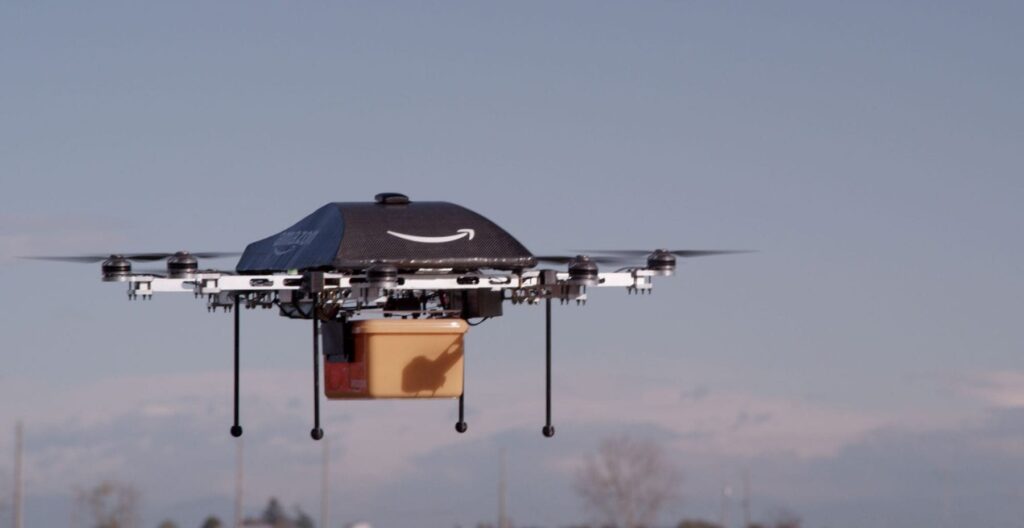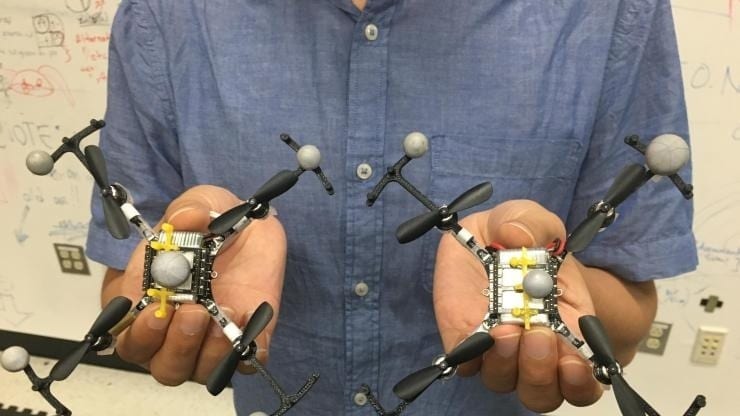
Miniature, pilotless aircraft are on the verge of becoming commonplace
THE scale and scope of the revolution in the use of small, civilian drones has caught many by surprise. In 2010 America’s Federal Aviation Authority (FAA) estimated that there would, by 2020, be perhaps 15,000 such drones in the country. More than that number are now sold there every month. And it is not just an American craze. Some analysts think the number of drones made and sold around the world this year will exceed 1m. In their view, what is now happening to drones is similar to what happened to personal computers in the 1980s, when Apple launched the Macintosh and IBM the PS/2, and such machines went from being hobbyists’ toys to business essentials.
That is probably an exaggeration. It is hard to think of a business which could not benefit from a PC, whereas many may not benefit (at least directly) from drones. But the practical use of these small, remote-controlled aircraft is expanding rapidly. After dragging its feet for several years the FAA had, by August, approved more than 1,000 commercial drone operations. These involved areas as diverse as agriculture (farmers use drones to monitor crop growth, insect infestations and areas in need of watering at a fraction of the cost of manned aerial surveys); land-surveying; film-making (some of the spectacular footage in “Avengers: Age of Ultron” was shot from a drone, which could fly lower and thus collect more dramatic pictures than a helicopter); security; and delivering things (Swiss Post has a trial drone-borne parcel service for packages weighing up to 1kg, and many others, including Amazon, UPS and Google, are looking at similar ideas).
The drones’ club
Nor is commerce the only area in which drones are making a mark. A glance at the academic world suggests many more uses await discovery. Because drones are cheap, geographers who could never afford conventional aerial surveys are able to use them to track erosion, follow changes in rivers’ sources and inspect glaciers. Archaeologists and historians are taking advantage of software that permits drones fitted with ordinary digital cameras to produce accurate 3D models of landscapes or buildings. This lets them map ancient ruins and earthworks. Drones can also go where manned aircraft cannot, including the craters of active volcanoes and the interiors of caves. A drone operated by the Woods Hole Oceanographic Institution, in Massachusetts, has even snatched breath samples from spouting whales for DNA analysis. And drones are, as might be expected, particularly useful for studying birds. A standard shop-bought drone can, for example, be used unmodified for counting nests high in a forest’s canopy.
Public servants, too, are putting drones through their paces. In the case of nest-counting, the idea is not to disturb the wildlife in question. In Ottawa officials have taken the opposite approach, with a “goosebuster” drone that is fitted with speakers which play the calls of birds of prey. This has kept a city park on Petrie Island free from the hundreds of geese whose droppings were causing problems. Police in Michigan are considering using drones for mapping the scenes of accidents, so that roads can be reopened more quickly. And drones can save lives, as well as keeping parks clean and traffic moving. In June, for example, Frank Roma, a fireman, rescued two boys from a river in Maine with the help of a drone. The boys were stuck on a rock in the middle of a powerful current. Mr Roma employed a drone to carry a line out to them, along which he passed life jackets that they were able to put on before an inflatable boat went out to perform the tricky manoeuvre of picking them up.
Other roles for drones are more questionable.
Read more: Unmanned aerial vehicles: Welcome to the Drone Age
The Latest on: UAVs and Drones
[google_news title=”” keyword=”UAVs and Drones” num_posts=”10″ blurb_length=”0″ show_thumb=”left”]
via Google News
The Latest on: UAVs and Drones
- Marine Corps Says It Wants Counter-Drone Capabilities 'Yesterday' as It Rushes to Roll Out New Systemson April 30, 2024 at 11:50 am
Over the last five years, the Marine Corps has been improving its counter-drone systems as it looks to reshape the force and compete with near-peer adversaries.
- Ukraine Dedicates $391 Million for Purchase of 300,000 Military Droneson April 30, 2024 at 10:33 am
In an aggressive move to strengthen its defense capabilities, Ukraine’s government has set aside Hr 15.5 billion ($391 million) exclusively for the acquisition of drones for its armed forces. The ...
- IDF Killing Palestinians with Sniper Drones Playing Recordings of Crying Infants?on April 30, 2024 at 10:12 am
In late April 2024, the claim emerged that the Israeli Defense Forces have used armed quadcopter drones against residents of Gaza's Al Nuseirat refugee camp to shoot and kill would-be good Samaritan ...
- The Air Force’s Combat Drone Saga Has Taken a Dramatic Turnon April 30, 2024 at 8:00 am
General Atomics XQ-67A Off Board Sensing Station (OBSS) drone seen during its first flight on Feb. 28, 2024 after taking off from Gray Butte Airport in Palmdale, CA. This design appears to correspond ...
- AgEagle Announces $3.4M Drone (UAV) Sale to French Armyon April 30, 2024 at 6:59 am
Largest single Purchase Order in the Company’s historyOrder indicates progress in global defense and security marketWICHITA, Kan., April 30, ...
- Russia Deploying New AI-Powered Anti-Drone Deviceson April 30, 2024 at 1:43 am
Russia has developed new artificial-intelligence (AI) powered anti-drone devices for use on the battlefield in Ukraine.
- Startup Defence Builder to build drones and technology requested by the armyon April 29, 2024 at 9:13 am
By Adrien Henni in Barcelona In recent weeks, Ukraine has witnessed a surge in defence tech innovation initiatives, signalling progress in this crucial sector. Among the news was the launch of Defence ...
- US military says it engaged five unmanned drones over Red Seaon April 28, 2024 at 5:57 pm
The U.S. military said on Sunday it had engaged five unmanned drones over the Red Sea that "presented an imminent threat to U.S., coalition, and merchant vessels in the region." ...
- Ukraine shoots down 4 suicide drones and 1 more unknown UAV overnighton April 28, 2024 at 12:42 am
Ukrainian air defense shot down four Russian attack drones and one unidentified drone in Kyiv, Vinnytsia, Khmelnytskyi and Kirovohrad oblasts, Mykola Oleshchuk, commander of Ukrainian Air Forces, said ...
- Russian forces attack Ukraine with 4 Shahed drones and 5 UAVs of unspecified type overnight – Ukraine's General Staffon April 27, 2024 at 9:28 pm
The Russians attacked Ukraine with four Shahed loitering munitions and five unidentified drones on the night of 27-28 April. Source: General Staff of the Armed Forces of Ukraine on Facebook, ...
via Bing News











